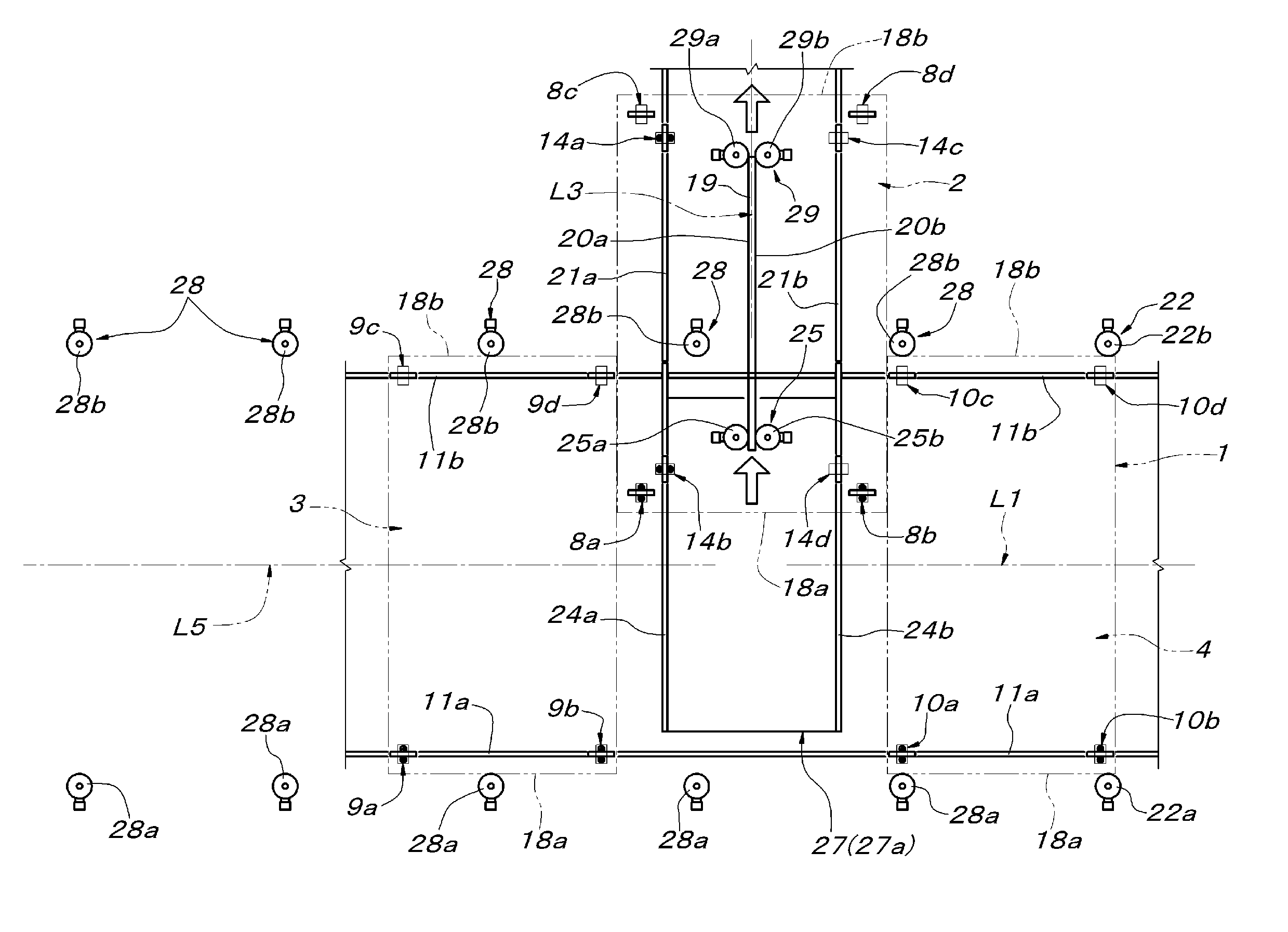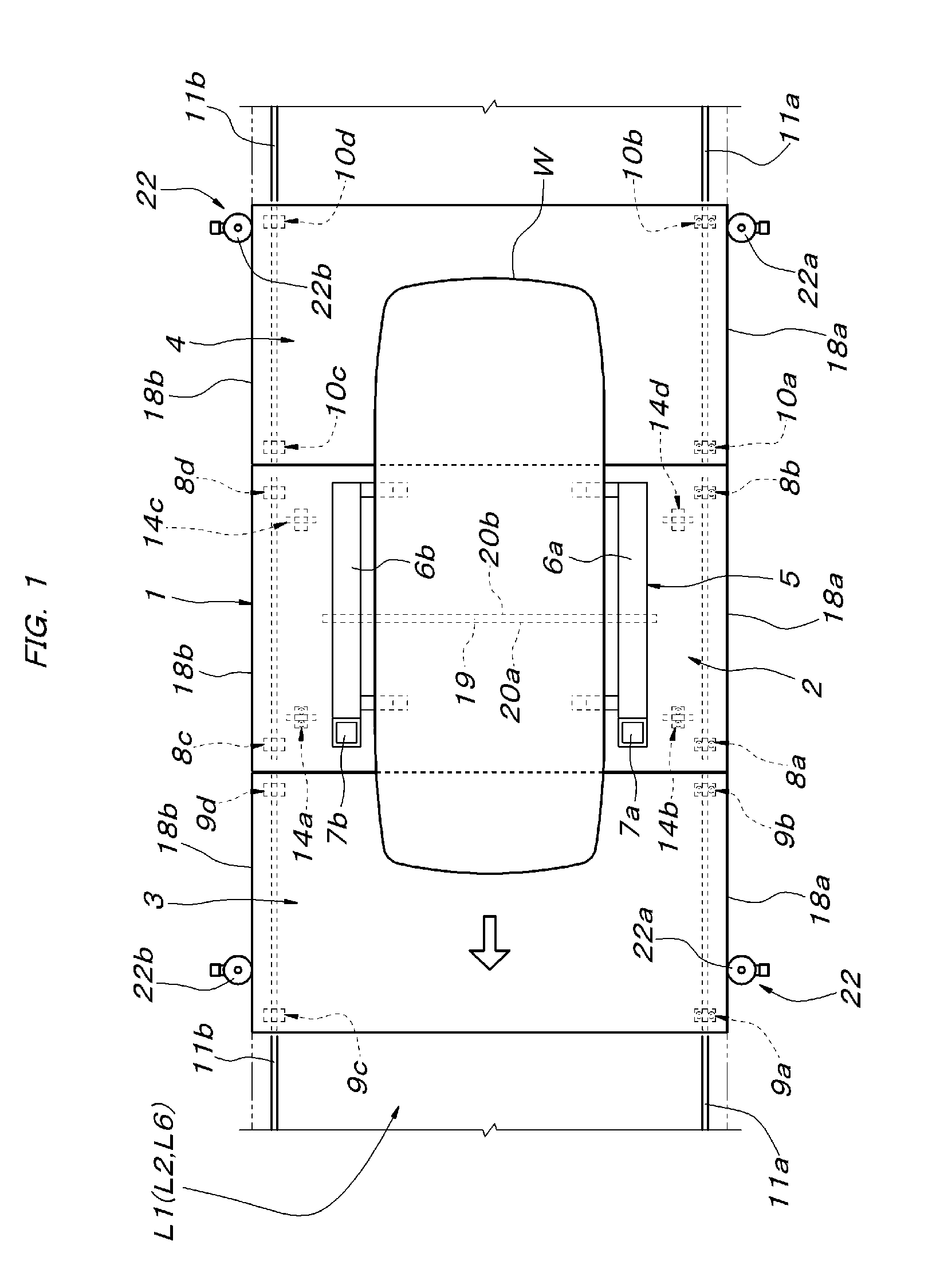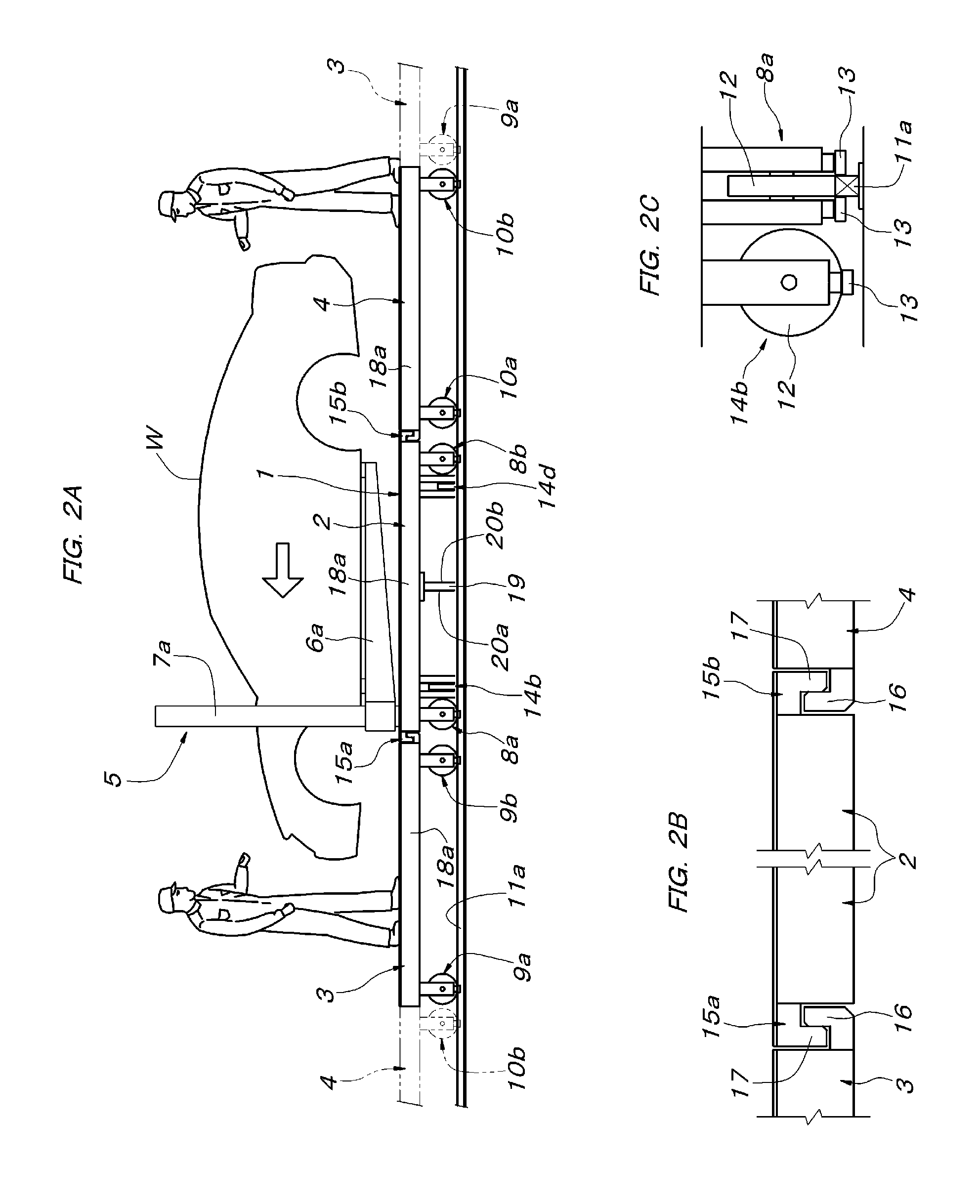Workpiece conveying equipment
a technology for conveying equipment and workpieces, applied in the direction of charging, lighting and heating equipment, furniture, etc., can solve the problems of reduced effectiveness of auxiliary stands, large auxiliary stands, high cost, etc., and achieve safe and easy operation, cost reduction, and sufficient length
- Summary
- Abstract
- Description
- Claims
- Application Information
AI Technical Summary
Benefits of technology
Problems solved by technology
Method used
Image
Examples
Embodiment Construction
[0032]As shown in FIGS. 1 to 3, a workpiece conveying traveling body 1 in this embodiment is constituted by a workpiece support carriage 2 and two auxiliary carriages 3 and 4 arranged adjacent to the front and rear in a traveling direction of a first conveying path L1 of the workpiece support carriage 2. The workpiece support carriage 2 has such a horizontally long rectangular shape in plan that a width in a left and right lateral direction is greater than a length in the traveling direction of the first conveying path L1. The workpiece support carriage 2 has an upper surface installed with a workpiece supporting means 5 to support a workpiece (an automobile body) W. The workpiece supporting means 5 is such that a pair of left and right elevating support arms 6a and 6b supporting both left and right lateral surfaces of the workpiece W are respectively supported by columns 7a and 7b so as to be vertically movable. The workpiece W supported by the workpiece supporting means 5 has both...
PUM
 Login to View More
Login to View More Abstract
Description
Claims
Application Information
 Login to View More
Login to View More - R&D
- Intellectual Property
- Life Sciences
- Materials
- Tech Scout
- Unparalleled Data Quality
- Higher Quality Content
- 60% Fewer Hallucinations
Browse by: Latest US Patents, China's latest patents, Technical Efficacy Thesaurus, Application Domain, Technology Topic, Popular Technical Reports.
© 2025 PatSnap. All rights reserved.Legal|Privacy policy|Modern Slavery Act Transparency Statement|Sitemap|About US| Contact US: help@patsnap.com



